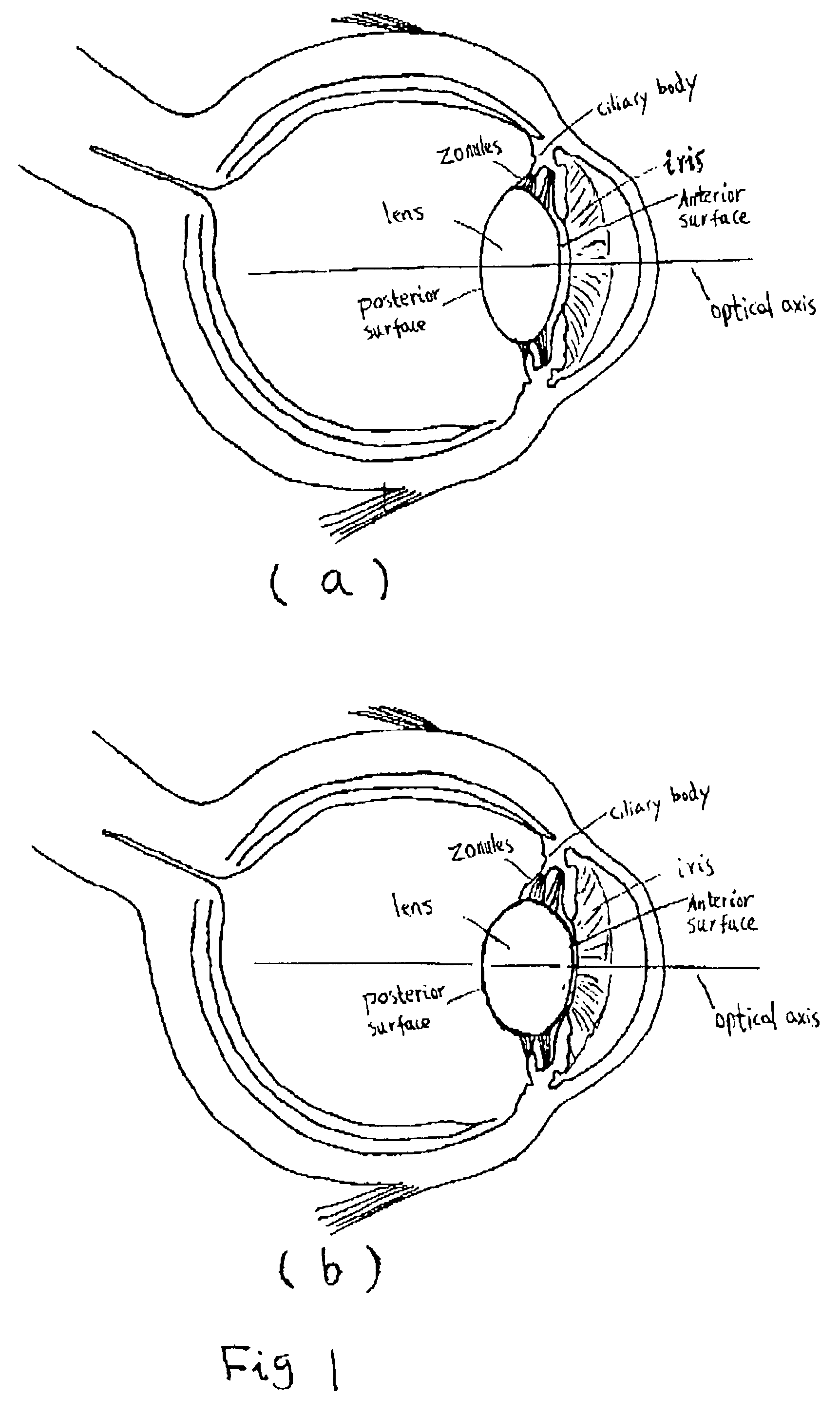Accommodative intraocular lens
a technology of intraocular lenses and lenses, applied in intraocular lenses, medical science, prosthesis, etc., can solve the problems of gradual vision loss, incomplete vision loss, and difficulty in changing back and forth between thin and thick lenses
- Summary
- Abstract
- Description
- Claims
- Application Information
AI Technical Summary
Benefits of technology
Problems solved by technology
Method used
Image
Examples
Embodiment Construction
[0032]The present invention provides an accommodating lens for patients whose natural lens has been removed. It also provides an accommodating lens which can avoid secondary cataract formation. These and other additional objects are achieved by providing an accommodating lens which has two main components. The first component is for providing the optical function as the lens and the second component is for preventing PCO. Additional optional lens structure features include a guiding function which directs the optical body of the lens in its bi-directional movement, i.e., towards the anterior or posterior chambers along the eye's optical axis, corresponding to the contraction or relaxation of the ciliary muscle via the zonules.
[0033]One embodiment in accordance with the present invention is an accommodating lens design as illustrated in FIG. 3 and its isometric view in FIG. 4. FIG. 6 is an isometric view of an embodiment of the present invention similar to that shown in FIG. 4, excep...
PUM
 Login to View More
Login to View More Abstract
Description
Claims
Application Information
 Login to View More
Login to View More - R&D
- Intellectual Property
- Life Sciences
- Materials
- Tech Scout
- Unparalleled Data Quality
- Higher Quality Content
- 60% Fewer Hallucinations
Browse by: Latest US Patents, China's latest patents, Technical Efficacy Thesaurus, Application Domain, Technology Topic, Popular Technical Reports.
© 2025 PatSnap. All rights reserved.Legal|Privacy policy|Modern Slavery Act Transparency Statement|Sitemap|About US| Contact US: help@patsnap.com



